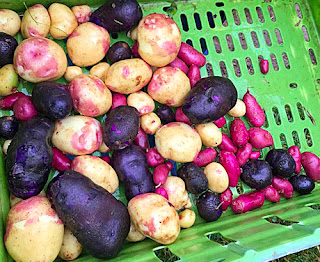It is important that children learn where their food comes from in order to establish a healthy diet and a good relationship with food as well as developing healthy eating habits. This term we have undertaken a number of activities to help the children learn about their food whilst having fun.
Together with another childminder we planted and then harvested some potatoes. The children helped tip out the contents of the pots and took it in turns to find potatoes within the mud. Some used their hands whilst others were more comfortable with spades. The children discussed and then put into practice washing the mud from the potatoes. This was also a great opportunity for counting them out and incorporating size language.
Once our potatoes were clean we cooked them and included them within our lunch with each child enjoying tasting them.
Our term ended in a slightly damp trip to the local pick your own. The children were not put off by the rain and were keen to all have a go at picking a variety of fruit and vegetables ranging from strawberries and raspberries through to carrots and onions.
We were lucky enough to have the farmer show off a section of fruit and vegetables to the children before taking them home for lunch. For the older children I used the opportunity to enable use of knives for cutting up the strawberries before the children polished these off with a large spoon of ice cream!












































